Top Short Selling Brokers for 2025
We found 11 online brokers that are appropriate for Trading Short Selling.
Best Short Selling Brokers Guide
Analysis by Andrew Blumer, Updated and fact-checked by Senad Karaahmetovic, Last updated – July 09, 2025
Short Selling Brokers

Short selling lets investors profit when a stocks value drops. For example, if you believe and electric vehicle maker is overvalued at 50 per share (just an example) after recent production delays, youd borrow 100 shares from a broker like IC Markets, sell them immediately for 5,000, then buy them back latersay at 40 per share if the price fallsand return the shares, pocketing the 1,000 difference (minus fees).
Because short selling requires borrowing shares, brokers impose margin requirements and charge borrowing fees that can spike during hard to borrow eventssuch as the January 2025 short squeeze in GameStop, when borrowing costs soared above 50% annualized. Always check a brokers stock lending inventory and fee schedule before initiating a short position.
This strategy carries outsized risks: if the stock price rises instead of fallsas happened with biotech firm BioSync in March 2025 when an unexpected FDA approval sent its shares up 60%youll face potentially unlimited losses and margin calls. Thats why short selling is generally recommended only for experienced traders who can monitor positions closely and meet sudden margin requirements.
In this guide, well walk through how short selling works in practice, compare types of short trades (naked vs. covered), and highlight key broker considerationslike real time borrow availability, dynamic margin rates, and negative balance protection. By the end, youll know how to assess whether short selling fits your market outlook and risk tolerance.
Best Short Selling Brokers
IC Markets
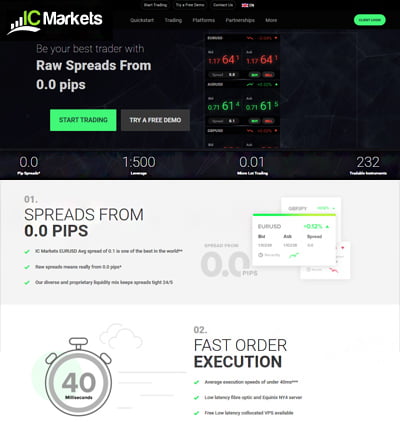
IC Markets supports short selling across Forex, indices and commodity CFDs with direct market access and tight spreads. For example, you can open a short position on the US500 index CFD in MT5 at 5,300 and cover it later at 5,250, profiting from a 50-point decline, all executed within their 40ms infrastructure.
RoboForex
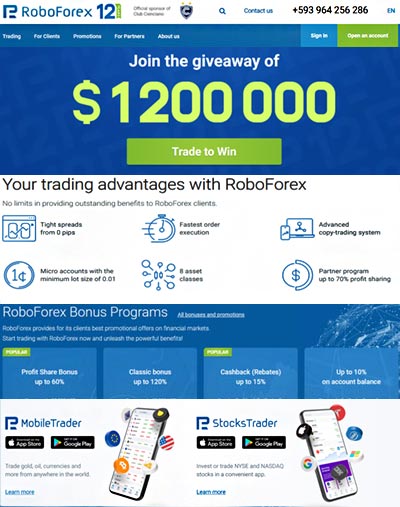
RoboForex allows high-leverage short selling on a wide range of instruments, including forex and cryptocurrency CFDs. For instance, you might short BTC/USD at 60,000 with 1:100 leverage, closing at 58,000 to capture a 2,000-point move, while using their MT4 platform to monitor margin levels in real time.
XM
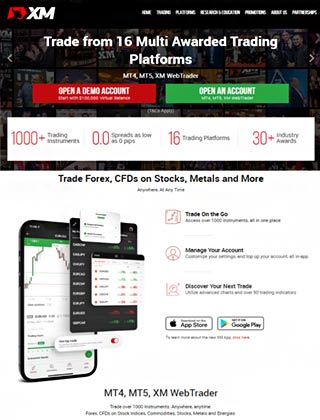
XM enables short selling on stock and commodity CFDs with competitive spreads and negative balance protection. For example, you can short gold at $1,850 per ounce and close the position at $1,830 to lock in a $20 gain, all from within XM’s MT5 web terminal backed by CySEC and ASIC oversight.
Pepperstone
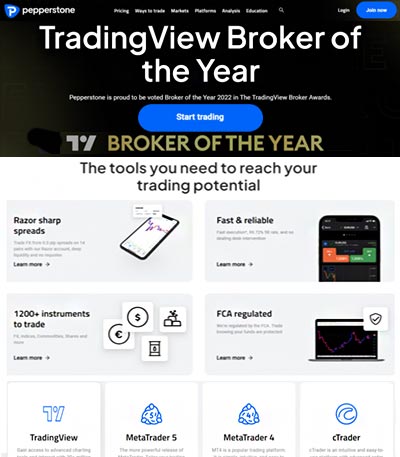
Pepperstone offers seamless short selling through its Razor account on cTrader and MT4, covering forex, indices and metals. For example, you could short EUR/GBP at 0.8500 and exit at 0.8450 for a 50-pip profit, leveraging Pepperstone’s deep liquidity and FCA-regulated execution.
AvaTrade
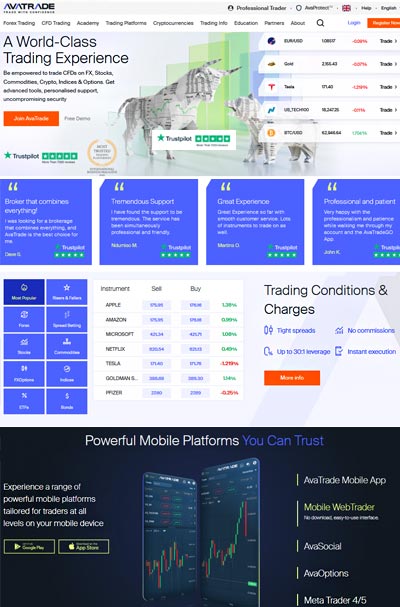
AvaTrade supports CFD short selling on forex, stocks and cryptocurrencies, with built-in negative balance protection. For example, you can short Apple shares CFD at $150 and cover at $145, capturing a $5 move, easily managed on the AvaTradeGo mobile app.
FP Markets
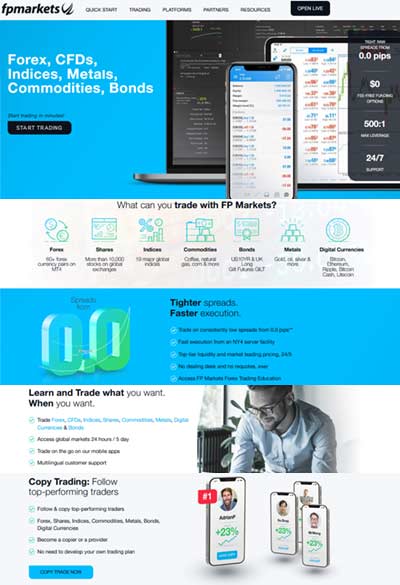
FP Markets allows short selling on MetaTrader 4 and 5 across forex, share CFDs and commodities with ultra-low spreads. For instance, you might short AUD/USD at 0.7000 and close at 0.6950 to secure a 50-pip gain, using their free VPS to keep your orders active even if your connection drops.
What Is Short Selling

Short selling is a strategy that allows traders to profit from a stock price decline. For instance, imagine NVIDIA is priced at $120.98 (example in the NVIDIA image chart, current NVIDIA price is higher). The process involves borrowing shares of NVIDIA, selling them at this price, and then repurchasing them later at a lower price, such as $100, to return them to the lender. The difference in prices represents your profit.
Heres a breakdown: You borrow NVIDIA shares from a broker and sell them at $120.98. If the price drops to $100, you buy them back and return them to the broker, earning a profit from the price difference. This strategy hinges on the stock price falling as anticipated.
There are two primary types of short selling: Covered Short Selling and Naked Short Selling. In Covered Short Selling, shares are borrowed from a broker before being sold. This is the most common and generally less risky method. On the other hand, Naked Short Selling involves selling shares without borrowing them first, which is a riskier approach. Naked short selling is prohibited in many markets, including the US, because it can manipulate prices and create artificial pressure on stocks.
Short selling carries high risk. If NVIDIAs stock price rises instead of falling, you would need to buy back the shares at a higher price, resulting in a loss. Since stock prices can rise infinitely, potential losses are unlimited.
Additionally, theres the risk of a 'short squeeze,' where a heavily shorted stock, like NVIDIA, unexpectedly rises. This forces short sellers to buy back shares to cover their positions, driving the price up even more, amplifying their losses.
What To Consider When Choosing a Short Selling Broker
Picking the right broker for short selling means looking beyond basic account features your choice can directly impact your ability to manage risk and seize opportunities. Here are the most crucial points to check before opening a short selling account:
Transparent Fee Structure: Look for a broker that clearly breaks down borrowing fees, margin interest, and commissions. For example, IC Markets recently updated its borrow cost to a simple one quarter percent fee on all covered stocks, while XM introduced a flat three quarter percent borrowing rate for difficult to borrow instruments making cost planning straightforward. Always compare total costs per trade instead of focusing solely on headline commission rates.
Advanced Trading Platform: A reliable platform should deliver real time borrow availability, dynamic risk alerts, and one click order entry. For instance, during the recent volatility in biotech stocks Pepperstone’s cTrader displayed live lendable share quantities and issued an alert when available borrowable shares fell below five thousand units allowing traders to cover positions before availability ran out.
Stock Borrow Availability: Not all brokers can source difficult to borrow shares when markets tighten. For instance, FP Markets maintained access to Tesla shares through its network of custodians even as other brokers paused new short positions, ensuring clients could hold or adjust trades without interruption.
Responsive Customer Support: Short selling often requires split second decisions and may trigger margin calls during fast rallies. After the electric vehicle stock surge left some traders unable to reach support, RoboForex distinguished itself by resolving a client’s margin request in under three minutes via live chat compared to industry averages of thirty minutes.
Choosing a broker equipped for short selling isn’t just about cost its about having the tools, transparency, and backup support you need when markets move against you. By vetting these factors upfront you’ll be better positioned to execute short strategies smoothly and protect your capital.
Consider the recent squeeze in a software firm’s shares. Unexpected positive earnings rumors and a surge of retail orders forced many short sellers to scramble for borrowed stock at sharply higher fees resulting in margin calls. Traders using AvaTrade with its live borrow rate alerts and pre trade risk warnings were able to close positions before losses escalated a powerful reminder of why broker choice matters for short selling.

Example of Short Selling Trade

Imagine you decide to short sell EUR/USD at 1.11844, expecting the euro to weaken against the US dollar. You enter the trade with $10,000, anticipating a decline. In a short sale, you borrow euros, sell them now, and plan to repurchase them later at a lower price. Here's how it works:
If the trade moves in your favor and the EUR/USD rate drops to 1.11000, the euro has weakened. You can now buy back the euros at the lower price, making a profit. For example, on a standard lot, this movement would yield around $844 in profit.
However, if the market moves against you and the EUR/USD rate rises to 1.12500, the euro has strengthened. You'll need to buy back the euros at the higher price, resulting in a loss. In this case, the difference between your entry point (1.11844) and the new rate (1.12500) could lead to a loss of $656 on a standard lot.
Short selling involves risks, and losses can be substantial, especially in volatile markets. The longer you remain in a losing position, the larger your potential loss. Use risk management techniques like stop loss orders to limit potential losses. Remember, forex trading carries significant risk due to leverage, so only trade with money you can afford to lose.
Experienced traders often use hedging strategies to mitigate risk. For example, if you're short selling EUR/USD, you might simultaneously take a long position in another currency pair like USD/JPY, which tends to move in the opposite direction. This can offset losses from the EUR/USD position. However, hedging requires careful planning and a solid understanding of market correlations.
Similarly, if you short sell Apple stock at $227.79 and it drops to $220, you make a profit. However, if the price rises to $235, you face a loss. To limit potential losses, you could use options contracts, such as buying a call option to hedge against the rising stock price.

Essential Insights for Successful Short Selling
Short selling can yield substantial gainsthink betting against overheated tech stocks like the post IPO crater of AI startup XenoTech or the squeeze triggered spikes in meme namesbut it demands vigilant risk management and market savvy.
Understanding Potential Rewards and Risks: When you short a struggling biotech firm whose Phase III trials just failed, you can profit as its share price tumbles. Yet losses can skyrocket if, for example, a takeover bid sends the stock sharply higher, as happened with Silverstone Mining earlier this year. This asymmetric loss profile makes precise position sizing and stop loss orders essential.
Market Analysis and Timing: Spotting overvalued sectorslike the recent crypto mining hardware run up ahead of the Bitcoin halvinghelps identify shorting opportunities. However, mistiming entry or exit, such as shorting bank stocks during last months unexpected Fed rate pause, can lead to rapid margin calls. Tightening analysis around earnings reports, regulatory moves, and macro data is critical.
Experience and Skill: Novices should hone their instincts on longshort equity strategies before tackling outright shorts. Seasoned traders rely on technical indicatorslike rising short interest coupled with bearish RSI divergenceto time their shorts, a tactic that proved profitable during the mid April sell off in clean energy shares.
Capital Requirements: While initial margin on a $10,000 short position might be just $2,500, sudden market ralliessay, a surprise buyback announcementcan inflate maintenance margins and force costly buy ins. Ensuring ample liquidity and access to additional funds is vital to withstand volatile rebounds.
Standard Trading vs. Short Selling: Key Differences

| Aspect | Standard Trading | Short Selling |
|---|---|---|
| Objective | Buy low and sell high to profit from price increases (for example purchase AAPL at $150 and sell at $170). | Sell high and buy low to profit from price declines (for example borrow TSLA at $700, sell, then repurchase at $650). |
| Initial Action | Purchase shares of a stock (for example buy 100 shares of MSFT at $250 each). | Borrow and sell shares that you do not own (for example borrow 50 shares of AMZN and sell them at $3 200 each). |
| Profit Scenario | Profit is made when the price of the stock rises after purchase (for example buy NFLX at $500 and sell at $550). | Profit is made when the price of the stock falls after selling short (for example sell short GOOGL at $2 800 and cover at $2 700). |
| Risk | Loss is limited to the amount invested. Maximum loss occurs if the stock price goes to zero (for example invest $1 000 and lose all if stock hits $0). | Risk is theoretically unlimited, as the stock price can rise indefinitely (for example short XYZ at $50 and face losses if it rises to $100). |
| Market Outlook | Suitable for a bullish market or when expecting stock price appreciation (for example bullish on tech sector and buy NVDA). | Suitable for a bearish market or when expecting stock price depreciation (for example bearish on retail and short RGLD). |
| Margin Requirements | Typically requires funds to purchase shares outright (for example deposit $5 000 to buy 20 shares at $250). | Requires margin to cover the borrowed shares and potential losses (for example post 30 percent margin to short oil futures). |
| Regulations | Generally straightforward and less regulated (for example standard trade approvals on equity platforms). | Subject to stricter regulations and rules to prevent market manipulation (for example locate and borrow rules in the US market). |
| Impact on Market | Contributes to buying pressure and price increases (for example heavy purchases of BAC pushing price up). | Can contribute to selling pressure and price decreases, potentially increasing market volatility (for example mass short of AMC triggering volatility). |
Understanding the Risks of Short Selling

While short selling can boost returns in a falling market, it carries serious pitfalls even for seasoned traders. Here are the most significant risks, with recent examples:
Unlimited Losses: When GameStops price rocketed in early 2021, some short sellers saw losses multiply beyond their marginone hedge fund reportedly lost over $1 billion in a single week.
High Volatility: During the COVID 19 vaccine announcements in late 2020, certain biotech shorts swung 30 percent against traders in hours, forcing rapid position adjustments.
Short Squeeze: In March 2025, a coordinated buying campaign of meme stock XYZ triggered a classic squeeze: short interest jumped from 25 percent to 40 percent of float, pushing the price from $12 to $48 in three days.
Regulatory Risks: In April 2024, the SEC introduced new requirements for real time short interest reporting, catching some brokers off guard and temporarily halting certain high frequency short strategies.
Borrowing Costs: When interest rates rose in late 2023, daily stock borrow fees for heavily shorted names like EV retailer VoltPower climbed above 2 percent, eroding returns for extended positions.
Short Selling Duration and Key Considerations
The length of time you hold a short position directly affects your risk and costs. Think about these factors:
No Fixed Duration: You might hold a short on a struggling retail stock for days, or on a volatile tech name for mere minutesdepending on your brokers rollover policies and your risk tolerance.
Broker Agreements: Some brokers, like BrokerX, cap short positions at 30 days; others automatically recall shares if your margin drops below 150 percent maintenance.
Interest and Borrowing Costs: Borrow fees for high demand shorts (e.g., blockbuster IPOs) can spike overnightrecently reaching 10 percent annually on hot new listingsso factor in daily carry costs.
Market Conditions: In choppy marketssuch as the June 2024 tech sell offkeeping shorts open beyond a few sessions often backfires, as rapid rebounds trigger forced buy ins.
By understanding these variables, monitoring real time borrow rates, and setting strict stop loss orders, traders can mitigate the inherent dangers of short selling and deploy it more strategically.
Short Selling Brokers Verdict

Over the past two years, I’ve used short selling to capitalize on declining stock prices from electric vehicle makers delayed by production issues to meme stocks caught in frenzied squeezes. I still remember borrowing 100 shares of an EV company at $50 per share through IC Markets, selling them for $5,000, and then covering at $40 to lock in a $1,000 profit (minus fees). That trade taught me how precise timing and platform speed can make or break a short strategy.
Margin requirements and borrowing costs demand constant vigilance. During the January 2025 GameStop squeeze, borrowing fees on some platforms spiked above 50 percent annualized overnight. I learned to check stock lending inventories in real time RoboForex’s live borrow rates alerted me before costs ballooned, letting me close my position with minimal slippage.
Not every short goes as planned. In March 2025, I wagered against biotech firm BioSync, only to see shares leap 60 percent after an unexpected FDA approval. The resulting margin call was a stark reminder that losses in short selling can exceed initial estimates. Since then, I’ve incorporated stop-loss orders and smaller position sizes to protect my capital when markets surprise.
Choosing the right broker is crucial. I now favor platforms like XM for its negative balance protection during volatile commodity shorts, and Pepperstone for real-time borrow availability on index CFDs. Their dynamic margin alerts and transparent fee schedules have saved me from costly recalls and unexpected borrow surcharges.
Ultimately, short selling remains a powerful tool for experienced traders who can monitor positions closely and react instantly to market shifts. By understanding borrowing mechanics, staying alert to squeeze risks, and selecting brokers with robust short selling support, I’ve been able to turn market downturns into profitable opportunities while keeping risk in check.
Short selling can be a highly effective strategy for experienced traders seeking to profit from declining stock prices. While it offers the potential for significant short term gains, it also carries substantial risks;including the possibility of unlimited losses if the market moves against your position. Because of these risks, short selling is most appropriate for traders with advanced skills and a deep understanding of market behavior. For beginners, it is generally advisable to focus on less risky strategies until they gain more experience and confidence in trading.
We have conducted extensive research and analysis on over multiple data points on Short Selling Brokers to present you with a comprehensive guide that can help you find the most suitable Short Selling Brokers. Below we shortlist what we think are the best short selling brokers after careful consideration and evaluation. We hope this list will assist you in making an informed decision when researching Short Selling Brokers.
Reputable Short Selling Brokers Checklist
Selecting a reliable and reputable online Short Selling trading brokerage involves assessing their track record, regulatory status, customer support, processing times, international presence, and language capabilities. Considering these factors, you can make an informed decision and trade Short Selling more confidently.
Selecting the right online Short Selling trading brokerage requires careful consideration of several critical factors. Here are some essential points to keep in mind:
- Ensure your chosen Short Selling broker has a solid track record of at least two years in the industry.
- Verify that the Short Selling broker has a customer support team of at least 15 members responsive to queries and concerns.
- Check if the Short Selling broker operates under the regulatory framework of a jurisdiction that can hold it accountable for any misconduct or resolve disputes fairly and impartially.
- Ensure that the Short Selling broker can process deposits and withdrawals within two to three days, which is crucial when you need to access your funds quickly.
- Look for Short Selling brokers with an international presence in multiple countries, offering its clients local seminars and training programs.
- Ensure the Short Selling broker can hire staff from diverse locations worldwide who can communicate fluently in your local language.
Our team have listed brokers that match your criteria for you below. All brokerage data has been summarised into a comparison table. Scroll down.
Compare Key Features of Short Selling Brokers in Our Brokerage Comparison Table
When choosing a broker for short selling trading, it's essential to compare the different options available to you. Our short selling brokerage comparison table below allows you to compare several important features side by side, making it easier to make an informed choice.
- Minimum deposit requirement for opening an account with each short selling broker.
- The funding methods available for short selling with each broker.
- The types of instruments you can trade with each short selling broker, such as forex, stocks, commodities, and indices.
- The trading platforms each short selling broker provides, including their features, ease of use, and compatibility with your devices.
- The spread type (if applicable) for each short selling broker affects the cost of trading.
- The level of customer support each short selling broker offers, including their availability, responsiveness, and quality of service.
- Whether each short selling broker offers Micro, Standard, VIP, or Islamic accounts to suit your trading style and preferences.
By comparing these essential features, you can choose a short selling broker that best suits your needs and preferences for short selling. Our short selling broker comparison table simplifies the process, allowing you to make a more informed decision.
Top 15 Short Selling Brokers of 2025 compared
Here are the top Short Selling Brokers.
Compare short selling brokers for min deposits, funding, used by, benefits, account types, platforms, and support levels. When searching for a short selling broker, it's crucial to compare several factors to choose the right one for your short selling needs. Our comparison tool allows you to compare the essential features side by side.
All brokers below are short selling brokers. Learn more about what they offer below.
You can scroll left and right on the comparison table below to see more short selling brokers that accept short selling clients.
| Broker |
IC Markets

|
Roboforex

|
eToro

|
XTB

|
XM

|
Pepperstone

|
AvaTrade

|
FP Markets

|
EasyMarkets

|
SpreadEx

|
FXPro

|
|---|---|---|---|---|---|---|---|---|---|---|---|
| Rating | |||||||||||
| Regulation | Seychelles Financial Services Authority (FSA) (SD018) | RoboForex Lid is regulated by Belize FSC, License No. 000138/7, reg. number 000001272. RoboForex Ltd, which is an (A category) member of The Financial Commission, also is a participant of its Compensation Fund | FCA (Financial Conduct Authority) eToro (UK) Ltd (FCA reference 583263), eToro (Europe) Ltd CySEC (Cyprus Securities Exchange Commission), ASIC (Australian Securities and Investments Commission) eToro AUS Capital Limited ASIC license 491139, CySec (Cyprus Securities and Exchange Commission under the license 109/10), FSAS (Financial Services Authority Seychelles) eToro (Seychelles) Ltd license SD076 | FCA (Financial Conduct Authority reference 522157), CySEC (Cyprus Securities and Exchange Commission reference 169/12), FSCA (Financial Sector Conduct Authority), XTB AFRICA (PTY) LTD licensed to operate in South Africa, KPWiG (Polish Securities and Exchange Commission), DFSA (Dubai Financial Services Authority), DIFC (Dubai International Financial Center), CNMV (Comisión Nacional del Mercado de Valores), KNF (Komisja Nadzoru Finansowego), IFSC (Belize International Financial Services Commission license number IFSC/60/413/TS/19) | Financial Services Commission (FSC) (000261/4) XM ZA (Pty) Ltd, Cyprus Securities and Exchange Commission (CySEC) (license 120/10) Trading Point of Financial Instruments Ltd, Australian Securities and Investments Commission (ASIC) (number 443670) Trading Point of Financial Instruments Pty Ltd | Financial Conduct Authority (FCA), Australian Securities and Investments Commission (ASIC), Cyprus Securities and Exchange Commission (CySEC), Federal Financial Supervisory Authority (BaFin), Dubai Financial Services Authority (DFSA), Capital Markets Authority of Kenya (CMA), Pepperstone Markets Limited is incorporated in The Bahamas (number 177174 B), Licensed by the Securities Commission of the Bahamas (SCB) number SIA-F217 | Australian Securities and Investments Commission (ASIC) Ava Capital Markets Australia Pty Ltd (406684), South African Financial Sector Conduct Authority (FSCA) Ava Capital Markets Pty Ltd (45984), Financial Services Agency (Japan FSA) Ava Trade Japan K.K. (1662), Financial Futures Association of Japan (FFAJ),, FFAJ, Abu Dhabi Global Markets (ADGM)(190018) Ava Trade Middle East Ltd (190018), Polish Financial Supervision Authority (KNF) AVA Trade EU Ltd, Central Bank of Ireland (C53877) AVA Trade EU Ltd, British Virgin Islands Financial Services Commission (BVI) BVI (SIBA/L/13/1049), Israel Securities Association (ISA) (514666577) ATrade Ltd, Financial Regulatory Services Authority (FRSA) | CySEC (Cyprus Securities and Exchange Commission) (371/18), ASIC AFS (Australian Securities and Investments Commission) (286354), FSP (Financial Sector Conduct Authority in South Africa) (50926), Financial Services Authority Seychelles (FSA) (130) | Cyprus Securities and Exchange Commission (CySEC) (079/07) Easy Forex Trading Ltd, Australian Securities and Investments Commission (ASIC) (Easy Markets Pty Ltd 246566), British Virgin Islands Financial Services Commission (BVI) EF Worldwide Ltd (SIBA/L/20/1135), Financial Sector Conduct Authority South Africa (FSA) EF Worldwide (PTY) Ltd (54018), FSC (Financial Services Commission) (SIBA/L/20/1135), FSCA (Financial Sector Conduct Authority) (54018) | FCA (Financial Conduct Authority) (190941), Gambling Commission (Great Britain) (8835) | FCA (Financial Conduct Authority) (509956), CySEC (Cyprus Securities and Exchange Commission) (078/07), FSCA (Financial Sector Conduct Authority) (45052), SCB (Securities Commission of The Bahamas) (SIA-F184), FSA (Financial Services Authority of Seychelles) (SD120) |
| Min Deposit | 200 | 10 | 50 | No minimum deposit | 5 | No minimum deposit | 100 | 100 | 25 | No minimum deposit | 100 |
| Funding |
|
|
|
|
|
|
|
|
|
|
|
| Used By | 200,000+ | 730,000+ | 35,000,000+ | 1,000,000+ | 10,000,000+ | 400,000+ | 400,000+ | 200,000+ | 250,000+ | 60,000+ | 7,800,000+ |
| Benefits |
|
|
|
|
|
|
|
|
|
|
|
| Accounts |
|
|
|
|
|
|
|
|
|
|
|
| Platforms | MT5, MT4, MetaTrader WebTrader, Mobile Apps, iOS (App Store), Android (Google Play), MetaTrader iPhone/iPad, MetaTrader Android Google Play, MetaTrader Mac, cTrader, cTrader Web, cTrader iPhone/iPad, cTrader iMac, cTrader Android Google Play, cTrader Automate, cTrader Copy Trading, TradingView, Virtual Private Server, Trading Servers, MT4 Advanced Trading Tools, IC Insights, Trading Central | MT4, MT5, R Mobile Trader, R StocksTrader, WebTrader, Mobile Apps, iOS (App Store), Android (Google Play), Windows | eToro Trading App, Mobile Apps, iOS (App Store), Android (Google Play), CopyTrading, Web | MT4, Mirror Trader, Web Trader, Tablet, Mobile Apps, iOS (App Store), Android (Google Play) | MT5, MT5 WebTrader, XM Apple App for iPhone, XM App for Android Google Play, Tablet: MT5 for iPad, MT5 for Android Google Play, XM App for iPad, XM App for iOS (App Store), Android (Google Play), Mobile Apps | MT4, MT5, cTrader,WebTrader, TradingView, Windows, Mobile Apps, iOS (App Store), Android (Google Play) | MT4, MT5, Web Trading, AvaTrade App, AvaOptions, Mac Trading, AvaSocial, Mobile Apps, iOS (App Store), Android (Google Play) | MT4, MT5, TradingView, cTrader, WebTrader, Mobile Trader, Mobile Apps, iOS (App Store), Android (Google Play) | easyMarkets App, Mobile Apps, iOS (App Store), Android (Google Play), Web Platform, TradingView, MT4, MT5 | Web, Mobile Apps, iOS (App Store), Android (Google Play), iPad App, iPhone App, TradingView | MT4, MT5, cTrader, FxPro WebTrader, FxPro Mobile Apps, iOS (App Store), Android (Google Play) |
| Support |
|
|
|
|
|
|
|
|
|
|
|
| Learn More |
Sign
Up with icmarkets |
Sign
Up with roboforex |
Sign
Up with etoro |
Sign
Up with xtb |
Sign
Up with xm |
Sign
Up with pepperstone |
Sign
Up with avatrade |
Sign
Up with fpmarkets |
Sign
Up with easymarkets |
Sign
Up with spreadex |
Sign
Up with fxpro |
| Risk Warning | Losses can exceed deposits | Losses can exceed deposits | 61% of retail investor accounts lose money when trading CFDs with this provider. | 69% - 80% of retail investor accounts lose money when trading CFDs with this provider. You should consider whether you understand how CFDs work and whether you can afford to take the high risk of losing your money. | CFDs are complex instruments and come with a high risk of losing money rapidly due to leverage. 74.12% of retail investor accounts lose money when trading CFDs with this provider. You should consider whether you understand how CFDs work and whether you can afford to take the high risk of losing your money. | 75-95 % of retail investor accounts lose money when trading CFDs | 71% of retail investor accounts lose money when trading CFDs with this provider | Losses can exceed deposits | Your capital is at risk | 65% of retail CFD accounts lose money | 75.78% of retail investor accounts lose money when trading CFDs and Spread Betting with this provider |
| Demo |
IC Markets Demo |
Roboforex Demo |
eToro Demo |
XTB Demo |
XM Demo |
Pepperstone Demo |
AvaTrade Demo |
FP Markets Demo |
easyMarkets Demo |
SpreadEx Demo |
FxPro Demo |
| Excluded Countries | US, IR, CA, NZ, JP | AU, BE, BQ, BR, CA, CW, CZ, DE, ES, EE, EU, FM, FR, FI, GW, ID, IR, JP, LR, MP, NL, PF, PL, RU, SE, SJ, SS, SL, SI, TL, TR, DO, US, IT, AT, PT, BG, HR, CY, DK, FL, GR, IE, LV, LT, MT, RO, SK, CH | ZA, ID, IR, KP, BE, CA, JP, SY, TR, IL, BY, AL, MD, MK, RS, GN, CD, SD, SA, ZW, ET, GH, TZ, LY, UG, ZM, BW, RW, TN, SO, NA, TG, SL, LR, GM, DJ, CI, PK, BN, TW, WS, NP, SG, VI, TM, TJ, UZ, LK, TT, HT, MM, BT, MH, MV, MG, MK, KZ, GD, FJ, PT, BB, BM, BS, AG, AI, AW, AX, LB, SV, PY, HN, GT, PR, NI, VG, AN, CN, BZ, DZ, MY, KH, PH, VN, EG, MN, MO, UA, JO, KR, AO, BR, HR, GL, IS, IM, JM, FM, MC, NG, SI, | US, IN, PK, BD, NG , ID, BE, AU | US, CA, IL, IR | AF, AS, AQ, AM, AZ, BY, BE, BZ, BT, BA, BI, CM, CA, CF, TD, CG, CI, ER, GF, PF, GP, GU, GN, GW, GY, HT, VA, IR, IQ, JP, KZ, LB, LR, LY, ML, MQ, YT, MZ, MM, NZ, NI, KP, PS, PR, RE, KN, LC, VC, WS, SO, GS, KR, SS, SD, SR, SY, TJ, TN, TM, TC, US, VU, VG, EH, ES, YE, ZW, ET | BE, BR, KP, NZ, TR, US, CA, SG | US, JP, NZ | US, IL, BC, MB, QC, ON, AF, BY, BI, KH, KY, TD, KM, CG, CU, CD, GQ, ER, FJ, GN, GW, HT, IR, IQ, LA, LY, MZ, MM, NI, KP, PW, PA, RU, SO, SS, SD, SY, TT, TM, VU, VE, YE | US, TR | US, CA, IR |
All Short selling brokers in more detail
You can compare Short Selling Brokers ratings, min deposits what the the broker offers, funding methods, platforms, spread types, customer support options, regulation and account types side by side.
We also have an indepth Top Short Selling Brokers for 2025 article further below. You can see it now by clicking here
We have listed top Short selling brokers below.
Short Selling Brokers List

Funding methods
Bank transfer Credit Card PaypalPlatforms
MT5, MT4, MetaTrader WebTrader, Mobile Apps, iOS (App Store), Android (Google Play), MetaTrader iPhone/iPad, MetaTrader Android Google Play, MetaTrader Mac, cTrader, cTrader Web, cTrader iPhone/iPad, cTrader iMac, cTrader Android Google Play, cTrader Automate, cTrader Copy Trading, TradingView, Virtual Private Server, Trading Servers, MT4 Advanced Trading Tools, IC Insights, Trading CentralCustomer support
Live chat Phone support Email supportAccount Types
Micro account Standard account ECN accountIslamic account VIP account

Funding methods
Bank transfer Credit Card PaypalPlatforms
MT4, MT5, R Mobile Trader, R StocksTrader, WebTrader, Mobile Apps, iOS (App Store), Android (Google Play), WindowsCustomer support
Live chat Phone support Email supportAccount Types
Micro account Standard account ECN accountIslamic account VIP account

eToro is a multi-asset platform which offers both investing in stocks and cryptoassets, as well as trading CFDs.
Please note that CFDs are complex instruments and come with a high risk of losing money rapidly due to leverage. 61% of retail investor accounts lose money when trading CFDs with this provider. You should consider whether you understand how CFDs work, and whether you can afford to take the high risk of losing your money.
This communication is intended for information and educational purposes only and should not be considered investment advice or investment recommendation. Past performance is not an indication of future results.
Copy Trading does not amount to investment advice. The value of your investments may go up or down. Your capital is at risk.
Copy trading is a portfolio management service, provided by eToro (Europe) Ltd., which is authorised and regulated by the Cyprus Securities and Exchange Commission.
Cryptoasset investing is highly volatile and unregulated in some EU countries. No consumer protection. Tax on profits may apply.
Don't invest unless you're prepared to lose all the money you invest. This is a high-risk investment, and you should not expect to be protected if something goes wrong. Take 2 mins to learn more.
eToro USA LLC does not offer CFDs and makes no representation and assumes no liability as to the accuracy or completeness of the content of this publication, which has been prepared by our partner utilizing publicly available non-entity specific information about eToro.
Funding methods
Bank transfer Credit Card PaypalPlatforms
eToro Trading App, Mobile Apps, iOS (App Store), Android (Google Play), CopyTrading, WebCustomer support
Live chat Phone support Email supportAccount Types
Micro account Standard account ECN accountIslamic account VIP account

Funding methods
Bank transfer Credit Card PaypalPlatforms
MT4, Mirror Trader, Web Trader, Tablet, Mobile Apps, iOS (App Store), Android (Google Play)Customer support
Live chat Phone support Email supportAccount Types
Micro account Standard account ECN accountIslamic account VIP account

Funding methods
Bank transfer Credit Card PaypalPlatforms
MT5, MT5 WebTrader, XM Apple App for iPhone, XM App for Android Google Play, Tablet: MT5 for iPad, MT5 for Android Google Play, XM App for iPad, XM App for iOS (App Store), Android (Google Play), Mobile AppsCustomer support
Live chat Phone support Email supportAccount Types
Micro account Standard account ECN accountIslamic account XM Swap-Free account (XM Ultra Low Account) VIP account

Funding methods
Bank transfer Credit Card PaypalPlatforms
MT4, MT5, cTrader,WebTrader, TradingView, Windows, Mobile Apps, iOS (App Store), Android (Google Play)Customer support
Live chat Phone support Email supportAccount Types
Micro account Standard account ECN accountIslamic account Pro Account VIP account

Funding methods
Bank transfer Credit Card PaypalPlatforms
MT4, MT5, Web Trading, AvaTrade App, AvaOptions, Mac Trading, AvaSocial, Mobile Apps, iOS (App Store), Android (Google Play)Customer support
Live chat Phone support Email supportAccount Types
Micro account Standard account ECN accountIslamic account VIP account

Funding methods
Bank transfer Credit Card PaypalPlatforms
MT4, MT5, TradingView, cTrader, WebTrader, Mobile Trader, Mobile Apps, iOS (App Store), Android (Google Play)Customer support
Live chat Phone support Email supportAccount Types
Micro account Standard account ECN accountIslamic account VIP account

Funding methods
Bank transfer Credit Card PaypalPlatforms
easyMarkets App, Mobile Apps, iOS (App Store), Android (Google Play), Web Platform, TradingView, MT4, MT5Customer support
Live chat Phone support Email supportAccount Types
Micro account Standard account ECN accountIslamic account VIP account

Funding methods
Bank transfer Credit Card PaypalPlatforms
Web, Mobile Apps, iOS (App Store), Android (Google Play), iPad App, iPhone App, TradingViewCustomer support
Live chat Phone support Email supportAccount Types
Micro account Standard account ECN accountIslamic account VIP account

Funding methods
Bank transfer Credit Card PaypalPlatforms
MT4, MT5, cTrader, FxPro WebTrader, FxPro Mobile Apps, iOS (App Store), Android (Google Play)Customer support
Live chat Phone support Email supportAccount Types
Micro account Standard account ECN accountIslamic account VIP account
Learn more
 Losses can exceed deposits
Losses can exceed deposits
Losses can exceed deposits